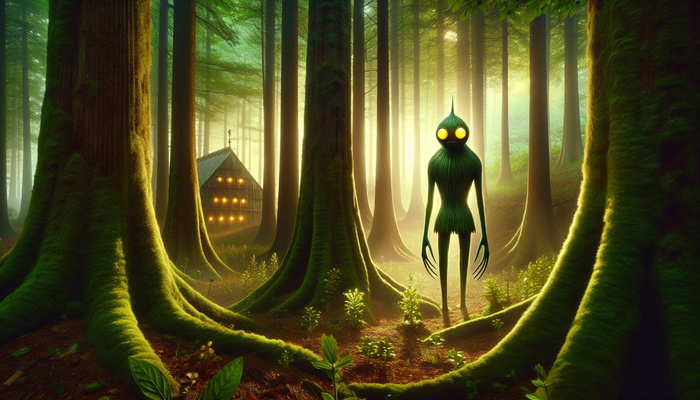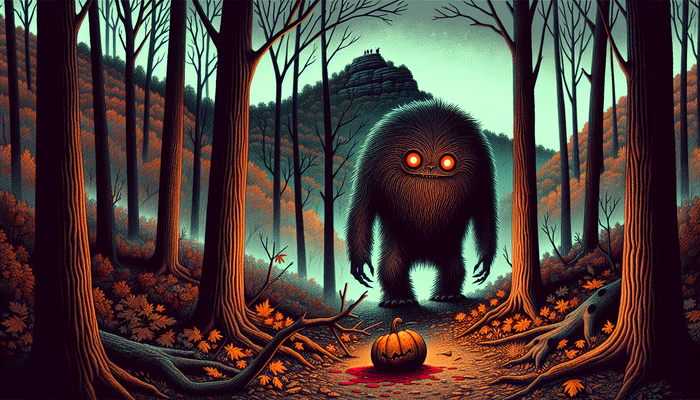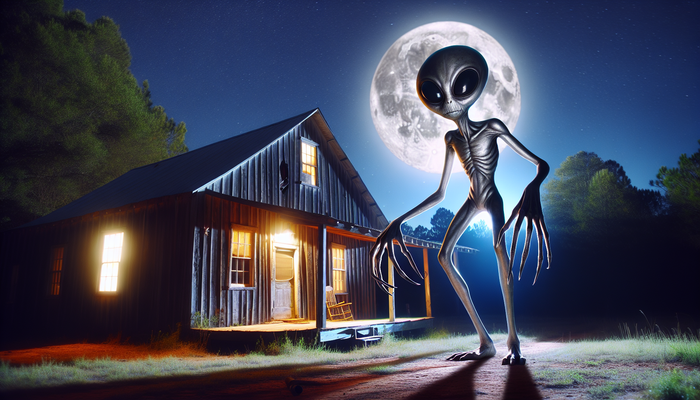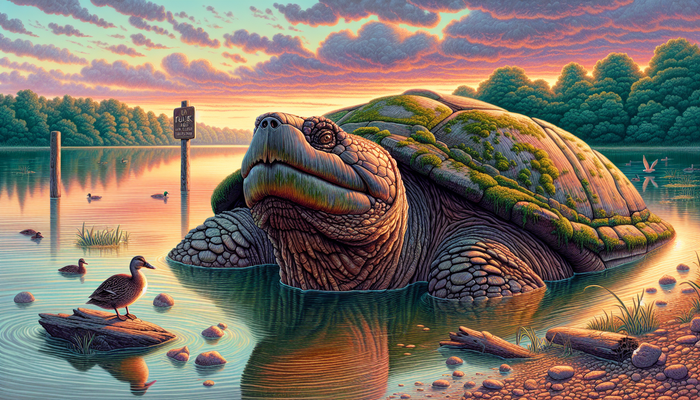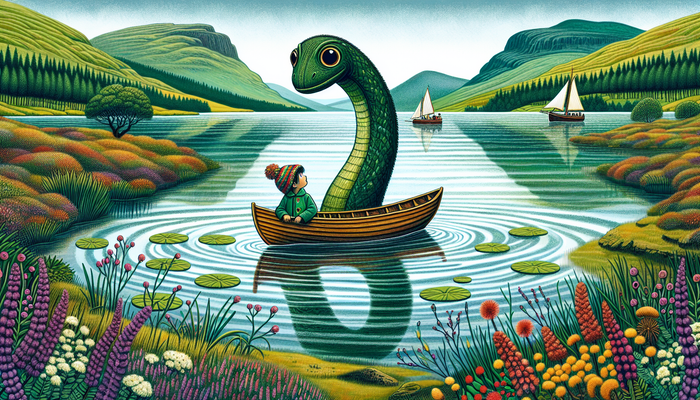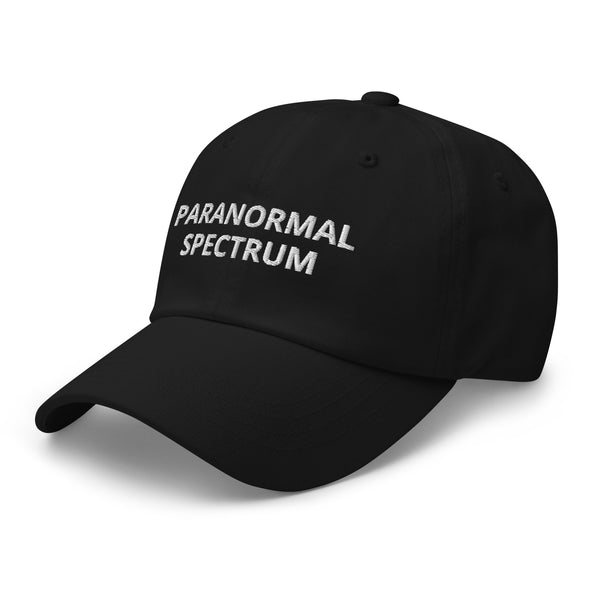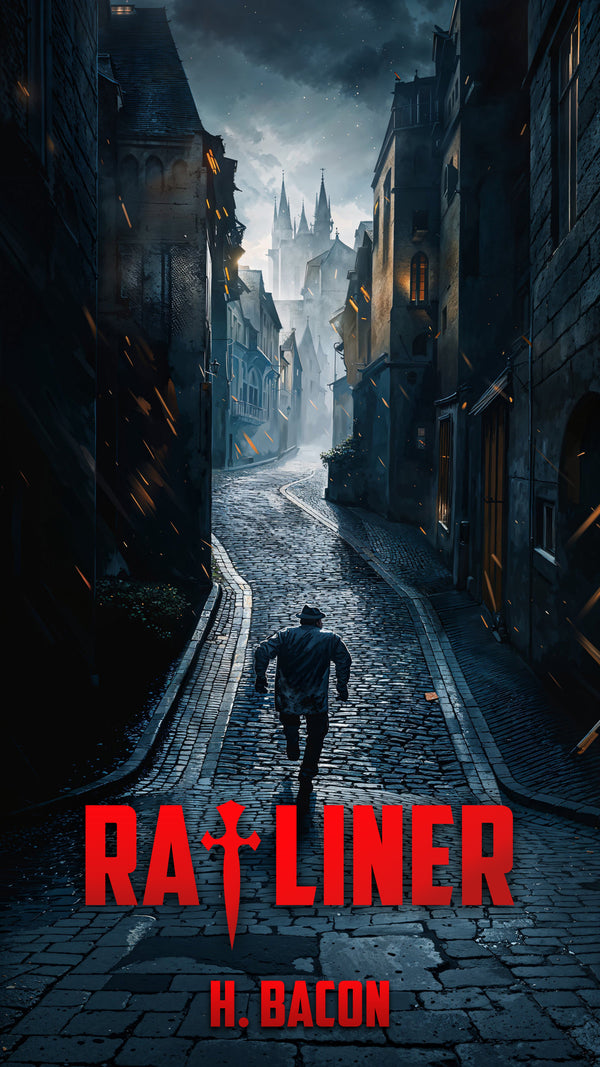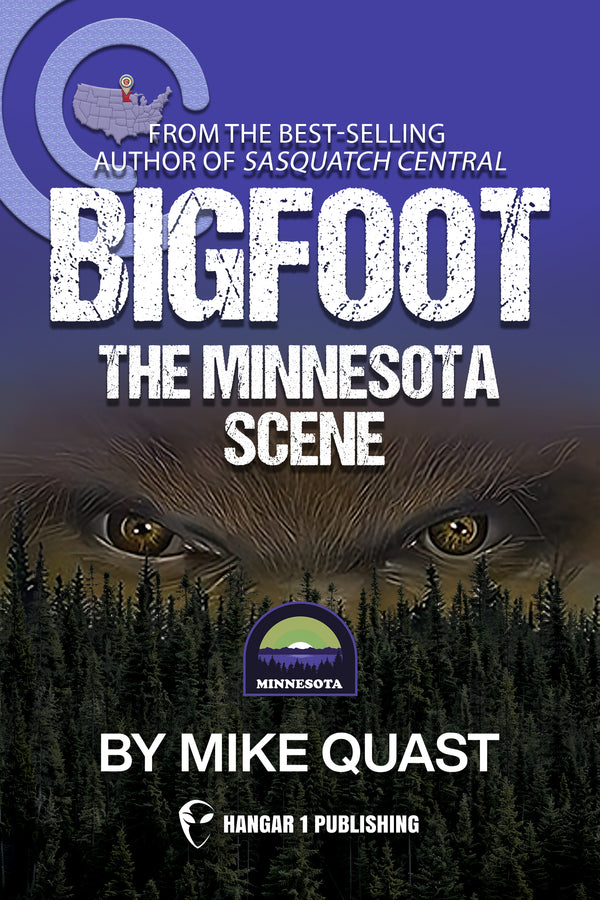Vermont Cryptids: From Champ to the Bennington Monster
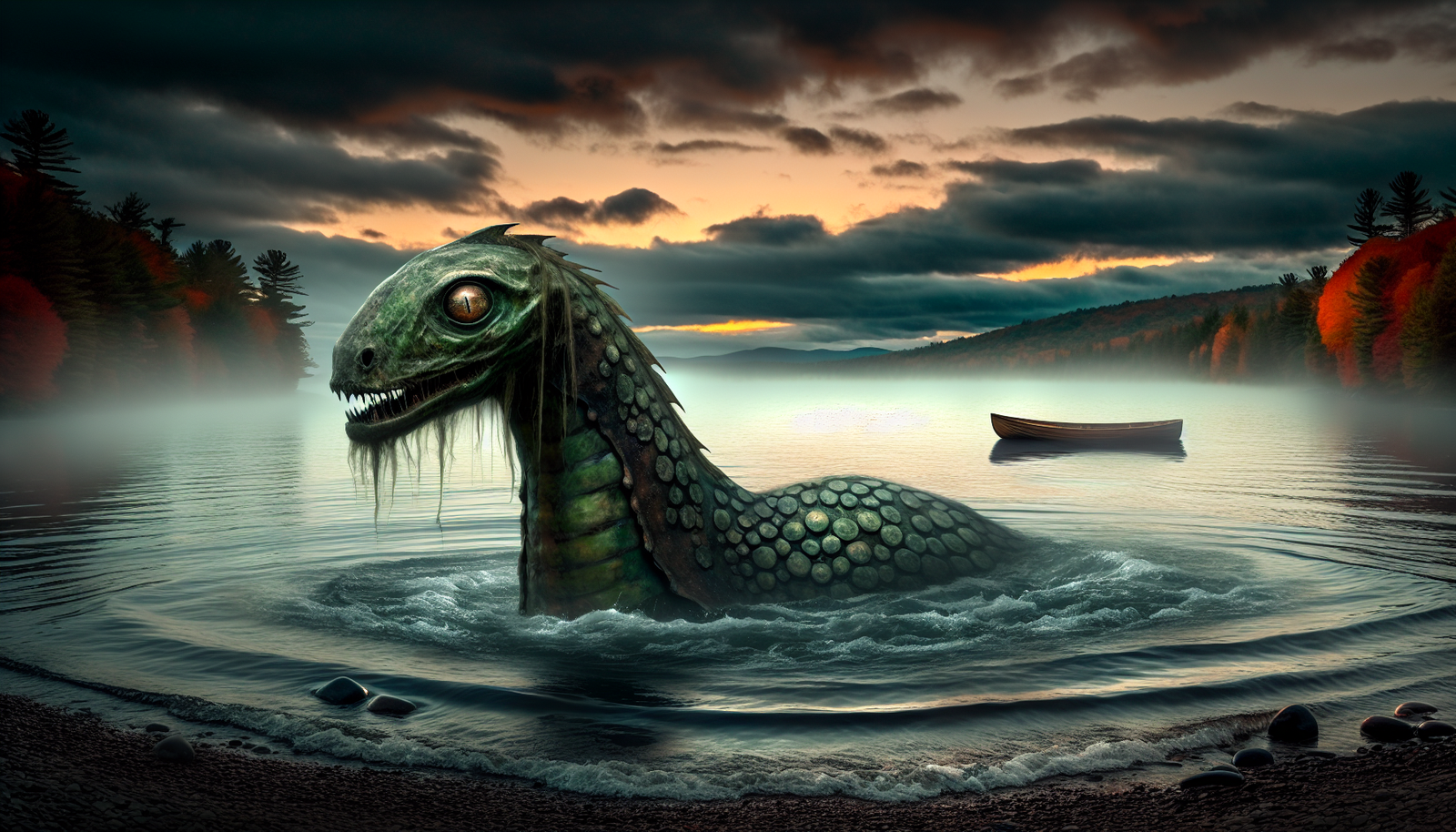
By Lucas Jennings, Cryptozoologist
Vermont: A State of Natural Beauty and Enigmatic Creatures
Nestled in the heart of New England, Vermont is a state renowned for its stunning natural landscapes, quaint small towns, and rich history. With its rolling green hills, pristine lakes, and dense forests, it's easy to see why Vermont has captured the hearts of countless visitors and residents alike. However, beneath this tranquil surface lies a fascinating world of mystery and intrigue—a realm inhabited by enigmatic creatures that have captivated the imaginations of generations. These beings, known as cryptids, have become an integral part of Vermont's folklore and cultural heritage, weaving themselves into the very fabric of the state's identity.
As an adventurous naturalist and cryptozoologist, I have dedicated my life to exploring the uncharted territories of the natural world, seeking out the creatures that science has yet to acknowledge. Vermont, with its rich tapestry of cryptid legends, has long been a source of fascination for me. From the legendary lake monster Champ to the elusive Pigman of Northfield, the Green Mountain State boasts an impressive array of cryptids that have left an indelible mark on the region's history and collective consciousness.
In this article, we will embark on a journey to unveil the mysteries surrounding Vermont's most famous cryptids, delving into the legends, sightings, and cultural significance of these enigmatic beings. We will explore the evidence, both historical and contemporary, that has fueled the enduring belief in their existence, and examine the theories and speculations that have emerged in an attempt to explain their origins and true nature. Along the way, we will also discover how these cryptids have become intertwined with Vermont's identity, inspiring art, literature, and community celebrations that keep their legends alive and thriving.
So, dear reader, prepare to step into the shadows of the unknown, as we venture into the heart of Vermont's cryptid lore. Whether you are a skeptic or a believer, there is no denying the power of these legends to captivate and inspire, reminding us of the endless possibilities that exist just beyond the boundaries of our current understanding. Join me on this thrilling journey, as we seek to unravel the mysteries that have long haunted the Green Mountain State.
Champ: The Legendary Lake Monster of Lake Champlain
One of the most iconic and enduring cryptids associated with Vermont is undoubtedly Champ, the legendary monster said to inhabit the depths of Lake Champlain. This massive freshwater lake, which stretches along the border between Vermont and New York, has been the subject of monster sightings and legends for centuries, capturing the imagination of Native Americans and European settlers alike.
The origins of the Champ legend can be traced back to the indigenous tribes that once called the region home, particularly the Abenaki people. In their oral traditions, the Abenaki spoke of a giant, serpentine creature known as "Gitaskog," which was believed to lurk beneath the surface of Lake Champlain. These ancient stories, passed down through generations, described Gitaskog as a powerful and mysterious being, one that demanded respect and caution from those who ventured near its watery domain.
When European settlers arrived in the region, they too began to report sightings of a strange beast in the lake's waters. Over time, these accounts grew in number and detail, with eyewitnesses describing a creature that was large, serpent-like, and possessed a long neck, humped back, and dark coloration. Some even claimed to have seen horns or a mane on the creature's head, adding to its fearsome and otherworldly appearance.
One of the earliest and most famous Champ sightings occurred in 1819, when a Captain Crum claimed to have encountered a 187-foot long black monster with a head resembling that of a seahorse. This account, though met with skepticism by some, helped to cement Champ's place in the annals of Vermont's cryptid history. As the years passed, more and more sightings were reported, each adding to the growing legend of the lake monster.
In 1873, the steamship W.B. Eddy allegedly collided with a large, unknown creature in Lake Champlain, nearly capsizing the vessel and sending its passengers into a panic. This incident, which was widely reported in the newspapers of the time, further fueled public interest in the Champ legend and sparked a wave of new sightings and speculations.
Perhaps the most compelling piece of evidence for Champ's existence emerged in 1977, when a woman named Sandra Mansi captured a now-iconic photograph of what appears to be a plesiosaur-like animal with its head and neck protruding from the waters of Lake Champlain. The "Mansi Photo," as it has come to be known, has been the subject of intense scrutiny and debate over the years, with some experts claiming it to be the most convincing proof of Champ's reality, while others dismiss it as a hoax or misidentification.
Despite the ongoing controversy surrounding the Mansi Photo and other alleged evidence, the legend of Champ has only continued to grow and evolve over time. Today, the creature is an integral part of Vermont's cultural landscape, inspiring countless books, documentaries, and television shows that seek to unravel the mystery of its existence.
The fascination with Champ extends far beyond the realm of popular media, however. Both the states of Vermont and New York have passed official resolutions to protect the creature, recognizing its importance as a cultural icon and potential source of tourism revenue. In the town of Port Henry, NY, an annual "Champ Day" festival is held every August, complete with parades, live music, and various Champ-themed activities that celebrate the enduring legacy of the lake monster.
For cryptozoology enthusiasts and researchers like myself, Champ represents one of the most tantalizing and enduring mysteries in the field. While skeptics argue that sightings can be attributed to misidentifications of known animals, optical illusions, or elaborate hoaxes, there remains a steadfast belief among many that something truly extraordinary lurks beneath the surface of Lake Champlain.
As I have delved deeper into the study of Champ and other lake monsters around the world, I have come to appreciate the complexity and nuance of these legends. While the scientific evidence for Champ's existence may be elusive, there is no denying the power of the creature's story to captivate and inspire generations of Vermonters and visitors alike.
In my own investigations of Lake Champlain, I have had the privilege of speaking with numerous eyewitnesses who claim to have encountered Champ firsthand. Their stories, often shared with a mix of awe and trepidation, have only served to deepen my fascination with this enigmatic creature and the mysteries it represents.
Whether Champ is a living fossil, an undiscovered species, or something altogether more fantastic, one thing is certain: the legend of the Lake Champlain monster will continue to thrive as long as there are those who dare to believe in the impossible. As we continue our journey through the realm of Vermont's cryptids, let us keep the spirit of Champ alive in our hearts and minds, ever vigilant for a glimpse of the unknown that may be lurking just beneath the surface.
The Pigman of Northfield: A Terrifying Hybrid
Moving from the depths of Lake Champlain to the shadowy forests of central Vermont, we come to the legend of the Pigman of Northfield—a terrifying hybrid creature said to haunt the rugged wilderness near the ominously named Devil's Washbowl. This area, known for its caves, waterfalls, and dark, tangled woods, has long been a source of mystery and unease for those who call Northfield home.
The origins of the Pigman legend can be traced back to a chilling incident that occurred on Halloween night in 1951. According to local lore, a 17-year-old boy named Sam Harris ventured out into the woods that evening, armed with an egg basket and a mischievous spirit. Sam, like many teenagers before and since, had planned to engage in some harmless Halloween pranks. However, as the night wore on, Sam failed to return home, and his disappearance quickly became the talk of the town.
Searches were organized, and the community rallied together to scour the dense forests surrounding Northfield, but no trace of Sam was ever found. As the days turned into weeks, and the weeks into months, a dark and unsettling theory began to take hold among some of the more superstitious residents of the area. They whispered that Sam had been possessed by the Devil himself, and that his transformation into a grotesque, pig-like creature was the result of this unholy union.
The legend of the Pigman grew and evolved over time, fueled by occasional sightings and strange occurrences in the woods near the Devil's Washbowl. Eyewitnesses described a humanoid figure covered in coarse, white hair, with a face that bore an unsettling resemblance to that of a pig. The creature was said to possess long, clawed hands, and to emit a series of grunts and squeals that echoed through the night, sending shivers down the spines of all who heard them.
As the Pigman's infamy spread, locals began to explore the caves and crevices of the Devil's Washbowl, seeking any evidence that might shed light on the creature's true nature. What they found only served to deepen the mystery and horror surrounding the legend. Scattered throughout the caves were piles of animal bones, including the remains of pigs, leading some to speculate that the Pigman was responsible for the slaughter of local livestock.
The discovery of these grisly remains, combined with the persistent sightings of the creature near the Devil's Washbowl, has led many to give the area a wide berth, particularly around Halloween. Even today, decades after Sam Harris's disappearance, the legend of the Pigman continues to haunt the imaginations of Northfield residents and visitors alike.
As a cryptozoologist and researcher, I have long been fascinated by the Pigman legend and the questions it raises about the nature of humanity and the boundaries between the known and the unknown. Is the Pigman truly a supernatural entity, born of a dark and unholy pact? Or is it perhaps a manifestation of our deepest fears and anxieties, given form by the power of collective belief?
In my own investigations of the Pigman legend, I have had the opportunity to speak with several individuals who claim to have encountered the creature firsthand. Their stories, while varied in their details, all share a common thread of terror and awe in the face of something that defies explanation.
One such witness, a former resident of Northfield named Ethan, recounted a chilling experience he had while camping near the Devil's Washbowl with friends in the late 1970s. According to Ethan, the group had settled in for the night when they were awakened by a series of strange noises emanating from the woods nearby. At first, they dismissed the sounds as the work of nocturnal animals, but as the noises grew closer and more insistent, a sense of unease began to settle over the campsite.
Suddenly, Ethan and his friends were confronted by a sight that would haunt them for the rest of their lives. There, at the edge of the firelight, stood a figure that was at once human and animal, its body covered in matted, white hair and its face a grotesque amalgamation of pig and man. The creature let out a series of guttural squeals before charging towards the terrified campers, sending them fleeing into the night.
While Ethan's story is just one of many that have emerged over the years, it serves as a powerful reminder of the enduring power of the Pigman legend and the hold it continues to have over the imaginations of those who call Northfield and its surrounding areas home.
As we continue our exploration of Vermont's cryptid lore, it is important to remember that legends like the Pigman are more than just campfire tales or fodder for Hollywood horror films. They are, in many ways, a reflection of our deepest fears and desires, a manifestation of the unknown that lurks at the edges of our understanding.
Whether the Pigman is a genuine cryptid, a supernatural entity, or something else entirely, one thing is certain: the legend of this terrifying hybrid will continue to haunt the forests and caves of Northfield for generations to come, a testament to the enduring power of mystery and the human imagination.
The Bennington Monster: Winged Terror of the Bennington Triangle
In the southwestern corner of Vermont, nestled among the rolling hills and dense forests of the Green Mountains, lies an area that has long been associated with strange disappearances, eerie sightings, and a pervasive sense of unease. This region, known as the "Bennington Triangle," takes its name from the nearby town of Bennington and has become synonymous with one of the state's most enduring and chilling cryptid legends: the Bennington Monster.
The Bennington Monster is described as a creature that seems to defy classification, possessing an unsettling amalgamation of features that hint at its otherworldly nature. Eyewitnesses claim that the beast has the body of a large cat, the head of a reptile, and the wings of a bird—a combination that seems to challenge the very laws of nature. Standing between five and seven feet tall, the monster is said to emit bone-chilling screams that echo through the wilderness, striking fear into the hearts of all who hear them.
The legend of the Bennington Monster is inextricably linked to a series of strange and unsettling disappearances that occurred in the area between 1945 and 1950, a period that has come to be known as the "Bennington Triangle" incidents or the "Patch Hollow Massacre." During this time, five individuals vanished without a trace in the vicinity of Glastenbury Mountain, including a 74-year-old hunter and an 18-year-old college student.
Despite extensive searches and investigations, no clues were ever found that could shed light on the fate of these missing persons. The lack of closure and the eerie similarities between the cases led some to speculate that a sinister force was at work in the Bennington Triangle—a force that many came to believe was none other than the Bennington Monster.
As the legend of the monster grew, so too did the theories about its origins and true nature. Some speculated that the creature was a surviving prehistoric pterosaur, a relic from a time when giant reptiles ruled the skies. Others suggested that it might be an unknown species of hybrid animal, the result of some strange and unholy union between disparate creatures.
Perhaps the most chilling theory, however, is the one that links the Bennington Monster to an ancient Native American legend—the story of the Wendigo. According to Algonquian folklore, the Wendigo is a malevolent spirit that possesses humans and transforms them into cannibalistic monsters, driven by an insatiable hunger for human flesh. Some have speculated that the Bennington Monster may be a manifestation of this dark and terrifying entity, a physical embodiment of the Wendigo's curse.
Sightings of the Bennington Monster have been reported throughout the years, with eyewitnesses claiming to have seen the creature flying through the air or running through the dense forest that blankets the region. These encounters are often accompanied by feelings of intense dread and a sense that something truly unnatural is afoot in the Bennington Triangle.
As a cryptozoologist and researcher, I have long been fascinated by the legend of the Bennington Monster and the many questions it raises about the nature of our world and the creatures that inhabit it. Are there truly ancient beasts that have managed to survive in the remote corners of our planet, hidden from the eyes of science and the modern world? Or are legends like the Bennington Monster the product of something else entirely—a manifestation of our deepest fears and the collective unconscious of a region steeped in mystery and tragedy?
From Bigfoot to UFOs: Hangar 1 Publishing Has You Covered!
Explore Untold Stories: Venture into the world of UFOs, cryptids, Bigfoot, and beyond. Every story is a journey into the extraordinary.
Immersive Book Technology: Experience real videos, sights, and sounds within our books. Its not just reading; its an adventure.


